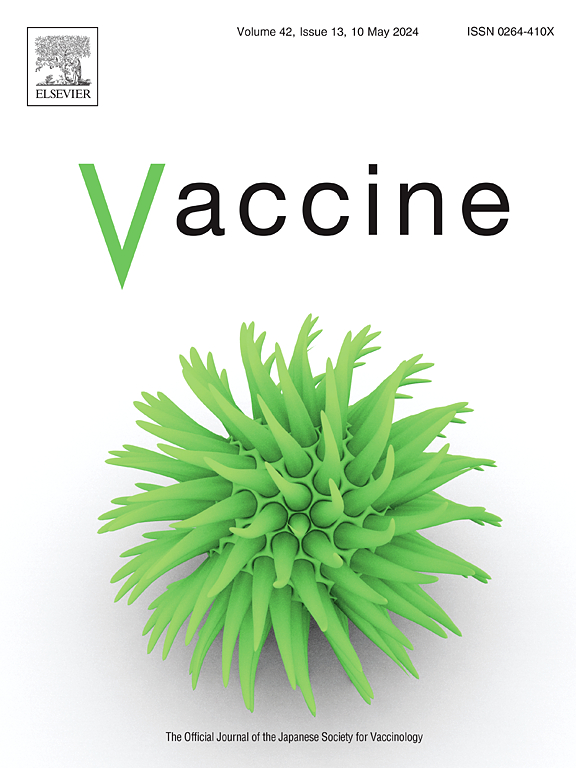HPV burden in Armenia among unvaccinated women: a series of cross-sectional population-based prevalence surveys
IF 4.5
3区 医学
Q2 IMMUNOLOGY
引用次数: 0
Abstract
Background
In 2017, Armenia introduced a national human papillomavirus (HPV) vaccination programme with a quadrivalent vaccine at age 14 years. Successful implementation of the programme was affected by social media campaigns aiming to discredit its efficacy and safety, the COVID-19 pandemic, and local armed conflicts. To support national public health stakeholders, we initiated a series of studies to provide local evidence on the burden of HPV infection.
Methods
Two cross-sectional HPV prevalence surveys among unvaccinated birth-cohorts of women were conducted: a urine-based survey (UBS) targeted women aged 17–21 years, and a cell-based survey (CBS) targeted women aged 21–39 years. In addition, we collected a series of invasive cervical cancer (CC) case laboratory samples to assess the attributable proportion of high-risk (HR) HPV types to estimate the impact of HPV vaccination in Armenia.
Findings
In the UBS and the CBS, 2485 and 3017 women were included, respectively. In the UBS, 110 (4.5 %) women were positive for any HPV type, 72 (2.9 %) of which were HR HPV and 29 (1.2 %) were HPV16/18. In the CBS, 553 (18 %) were positive for any HPV type, 326 (11 %) of which were HR HPV, and 99 (3.3 %) were HPV16/18. In the CC series, HPV16/18 accounted for 71 % of all HR HPV infections, HPV 31, 33, 45, 52, and 58 accounted for an extra 18 %. The remaining HR types accounted for 11 % of all CC infected by HR HPV. The corresponding predicted cumulative 10-year CC incidence among 20–24, 25–34, and 35–44-year age group, was 0.3 %, 1.3 %, and 3.8 %, respectively.
Interpretation
Our findings provide a picture of the HPV infection and future cervical cancer burden among unvaccinated young and adult women in urban areas of Armenia and can inform context-specific vaccination and screening policies.
亚美尼亚未接种疫苗妇女的HPV负担:一系列以人口为基础的横断面流行病学调查
2017年,亚美尼亚推出了一项全国性人乳头瘤病毒(HPV)疫苗接种计划,在14岁时接种四价疫苗。旨在诋毁该方案有效性和安全性的社交媒体活动、2019冠状病毒病大流行和地方武装冲突影响了该方案的成功实施。为了支持国家公共卫生利益攸关方,我们启动了一系列研究,以提供有关HPV感染负担的当地证据。方法在未接种疫苗的女性出生队列中进行了两项横断面HPV患病率调查:一项基于尿液的调查(UBS)针对17-21岁的女性,一项基于细胞的调查(CBS)针对21-39岁的女性。此外,我们收集了一系列侵袭性宫颈癌(CC)病例实验室样本,以评估高危(HR) HPV类型的归因比例,以估计HPV疫苗接种在亚美尼亚的影响。UBS和CBS分别纳入了2485名和3017名女性。在UBS中,110名(4.5%)女性HPV阳性,其中72名(2.9%)为HR HPV, 29名(1.2%)为HPV16/18。在CBS中,553例(18%)HPV阳性,其中326例(11%)为HR HPV, 99例(3.3%)为HPV16/18。在CC系列中,HPV16/18占所有HR HPV感染的71%,HPV 31、33、45、52和58占额外的18%。其余HR型占所有感染HR HPV的CC的11%。在20-24岁、25-34岁和35 - 44岁年龄组中,相应的10年累积CC发病率预测分别为0.3%、1.3%和3.8%。解释:我们的研究结果提供了亚美尼亚城市地区未接种疫苗的年轻和成年妇女的HPV感染和未来宫颈癌负担的情况,并可以为具体情况的疫苗接种和筛查政策提供信息。
本文章由计算机程序翻译,如有差异,请以英文原文为准。
求助全文
约1分钟内获得全文
求助全文
来源期刊

Vaccine
医学-免疫学
CiteScore
8.70
自引率
5.50%
发文量
992
审稿时长
131 days
期刊介绍:
Vaccine is unique in publishing the highest quality science across all disciplines relevant to the field of vaccinology - all original article submissions across basic and clinical research, vaccine manufacturing, history, public policy, behavioral science and ethics, social sciences, safety, and many other related areas are welcomed. The submission categories as given in the Guide for Authors indicate where we receive the most papers. Papers outside these major areas are also welcome and authors are encouraged to contact us with specific questions.
 求助内容:
求助内容: 应助结果提醒方式:
应助结果提醒方式:


